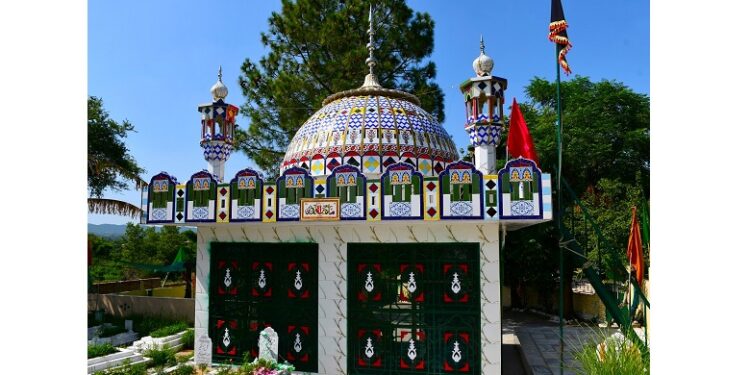
There are many village intellectuals and oral historians in Pothohar who have preserved the oral history and cultural heritage of the region
Zulfiqar Ali Kalhoro
Like other tehsils of Rawalpindi, Kallar Syedan is also home to many shrines of Sufi saints. One such shrine is located in Pind Bainso, which is located about 17 km northeast of Kallar Syedan town. This village is situated in a picturesque setting where Januja, Gakhar, Bhatti and other tribes live. I had interviews with a few village intellectuals and oral historians and Raja Muhammad Nawaz was quite knowledgeable about the oral history of the village in general and his tribe Janjua in particular. He is a retired schoolteacher and the former Town Nazim of Kallar Syedan during former president Pervez Musharraf’s tenure. He is an 83-year-old oral historian and authority on the oral village.
According to Raja Muhammad Nawaz, Pind Bainso village is believed to have been founded by Rai Bainso Khan Janjua son of Muhammad Ali Khan and grandson of Otla or Otlan Khan. Rai Bainso Khan was a great-great-grandson of Sultan Ahmad alias Pir Kala. Before partition, Pind Bainso was a multicultural village where apart from Muslims, Hindus and Sikhs also lived. He remembers the names of some of the notable Sikhs of the village. A few notable Sikhs of Pind Bainso were Jivan Singh and his brother Wazir Singh, Peshori Lal, Kalu Singh, Lal Singh, Hira Singh and others. There was also a bazaar in the village. About six shops were located in the bazaar, all of which belonged to Sikhs of Pind Bainso. One shop was owned by Sohan Singh of Doberan Kalan who used to come daily from there to Pind Bainso. Sikhs also live in good numbers in Doberan Kalan, where both Sikhs and Hindus controlled the business of Doberan Kalan. The Hindus of Pind Bainso owned agricultural land in the village and neighboring areas, whereas Sikhs were mainly engaged in business. Muslims, Hindus and Sikhs lived in harmony and peace in the village and no untoward incident ever happened, as told by Raja Muhammad Nawaz Janjua.
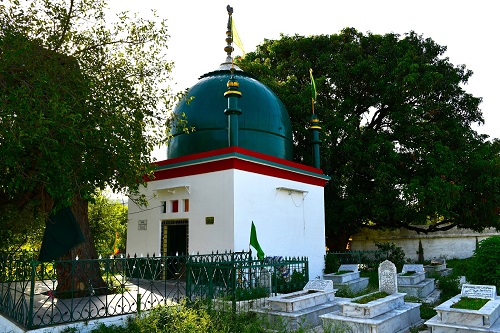
Like Raja Muhammad Nawaz, there are many village intellectuals and oral historians in different villages and towns of Pothohar who have preserved the oral history and cultural heritage of their respective areas and shared the stories of shared heritage and interfaith harmony with me. They also know about the existing and lost cultural landscapes of the villages and towns of Pothohar that I have been documenting since 1998. Old mosques, shrines, forts, fortresses, temples, choubaras (mansions), wells, tanks, banyan and pipal trees, Maaris (mansions), Samadhis, and gurdwaras are part of the cultural landscapes of the villages and towns in Pothohar.
Raja Muhammad Nawaz still remembers the existing and lost cultural landscape of Pind Bainso. There were two small Sikh gurdwaras in Pind Bainso village: both are lost and now preserved in his memory. The main and large gurdwara was located in Doberan Kalan where Sikhs of Pind Bainso used to go on special occasions. All houses of Sikhs and Hindus have also disappeared. Sikhs of Pind Bainso were an influential and wealthy community. One of the Sikhs built a well in the village that was most probably built by Jivan Singh or his father. Muslims and Hindus also fetched water from the well which was built by Sikhs. This well is extant in the village. There is also a tank (ban) which was made by Muslims of Pind Bainso village.
Two shrines of Sufi saints are also part of the cultural landscape of Pind Bainso village which are venerated by the local community. It was also revered by both Hindus and Sikhs in pre-partition Pind Bainso. The earliest saint who settled in Pind Bainso village was Pir Bodley Ali Shah about whom nothing is known. The second most popular shrine in the village belongs to Pir Fateh Ali Qadiri Naushahi alias Khalifa Sahib as written on his gravestone. Khalifa Fatehuddin Majuzb Barqandazi Pothohari as he was called by the earlier writers who wrote about him. The earliest writer who briefly mentioned him was Syed Sharif Ahmad Sharafat Naushahi the author of 16 Vol books Sharif ul Tarikh that deals with Naushahiyya saints. According to Sharif ul- Tarikh Vol 3, No .6 by Syed Sharif Ahmed Sharafat Ali Naushahi (1971), Khalifa Fatehuddin Mazjub Barqandazi Pothohari was initiated into Qadiri Naushahi Silsila by Sain Kala (d.1863) of Barki Budhal village in Gujar Khan. Sain Kala was himself a deputy (khalifa) of Khair Muhammad Qadiri Naushahi (d. 1783-84) whose shrine is located at Jaba in Gujar Khan’s Jabbar town. Khair Muhammad was an eminent khalifa of Syed Mir Kalan Badshah Gilani whose shrine is located in Gujar Khan’s Rokhia Sharif village.
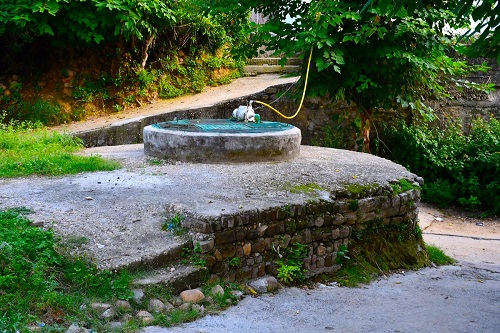
Old mosques, shrines, forts, fortresses, temples, choubaras, wells, tanks, banyan and pipal trees, Maaris, Samadhis, and gurdwaras are part of the cultural landscapes of the villages and towns in Pothohar
Muhammad Hanif Hanfi (1991) the author of Ruh Da Rishta believes that he was popularly known as Sain Fatu. Khalifa Fatehuddin Majzub Barqandazi also called Pir Fateh Ali alias Khalifa Sahib by the local community was associated with the profession of shoemaking (Kafshdozi) in Pind Bainso. He used to visit frequently his spiritual master Sain Kala at Barki Budhal village in Gujar Khan. He used to do chores for his spiritual master and later repaired the shoes of residents of Barki Budhal. He was a beloved disciple of Sain Kala and was known for his simplicity and piety. He was a true mystic who never left his profession of shoemaking after attaining spiritual prowess. According to Mahmood Akmal, a resident of Dhoke Potha in Nala Musalmana who is the poet and the author of Sachiyan Yadan, also knows the oral history of his area. He told that Sain Barkhurdar, who was from the Awan tribe, was an eminent disciple of Khalifa Fatehuddin Majzub Barqandazi.
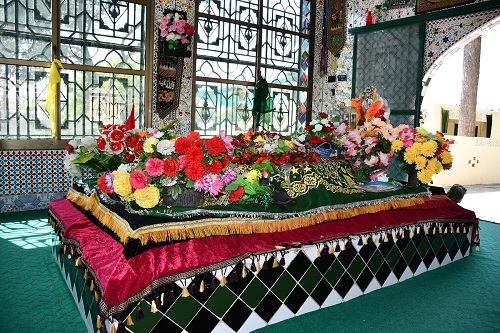
I also visited the shrine of Sain Barkhurdar with Muhammad Hanif Hanfi, the author and poet, and Mahmood Akmal, which is located at Nala Musalmana’s Mohra Kunwan village, 2 km east of Pind Bainso village. It is said that Sain Barkhurdar used to grind wheat at Chakki of Khalifa Fatehuddin Majzub Barqandazi and became his disciple. Sain Barkhurdar also was known for his piety in his village. Sain Barkhurdar’s son Sain Eddu was also an eminent mystic of the village. A tomb has been built over the graves of both father and son at Mohra Kunwan in Nala Musalmana.
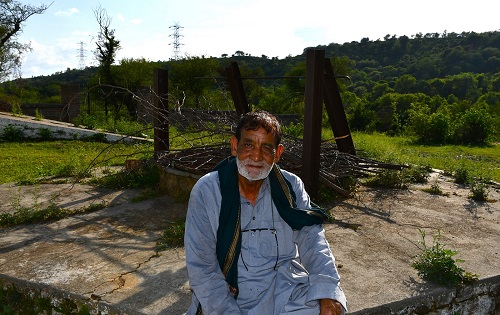
It is not known when Khalifa Fatehuddin Majzub Barqandazi died. Raja Muhammad Nawaz believes that he was alive during the time of his grandfather Muhammad Buta Khan Janjua who died in 1880. Moreover, he believes that Khalifa Fatehuddin Majzubu died in about 1890 or 1895. According to Syed Sharif Ahmed Sharafat Naushahi (1971) the author of Sharif ul-Tarikh Vol.3, No. 6, he had three sons- Sharaf, Pero, and Kaman.
Today, the shrine of Khalifa Fatehuddin Majzub Barqandazi is frequented by residents of Bind Bainso and people of neighboring villages. An impressive tomb has been built over his grave. There is a single grave inside the tomb which bears an inscription on his gravestone as Pir Fateh Ali alias Khalifa Sahib Qadiriyya Naushahiyya–Sachiariyya-Barqandaziyya. Adjacent to the tomb of Khalifa Fatehuddin Mazub Barqandazi is a canopy of Pir Bodley Ali Shah who is believed to have arrived at the village probably soon after its foundation by Rai Bainso Khan Janjua.
___________________
 Dr. Zulfiqar Ali Kalhoro, an anthropologist, has authored over 14 books: ‘Symbols in Stone: The Rock Art of Sindh’, ‘Perspectives on the art and architecture of Sindh’, ‘Memorial Stones: Tharparkar’ and ‘Archaeology, Religion and Art in Sindh’. He may be contacted at: zulfi04@hotmail.com
Dr. Zulfiqar Ali Kalhoro, an anthropologist, has authored over 14 books: ‘Symbols in Stone: The Rock Art of Sindh’, ‘Perspectives on the art and architecture of Sindh’, ‘Memorial Stones: Tharparkar’ and ‘Archaeology, Religion and Art in Sindh’. He may be contacted at: zulfi04@hotmail.com
Courtesy: The Friday Times Naya Daur Lahore (Posted on July 14, 2023)